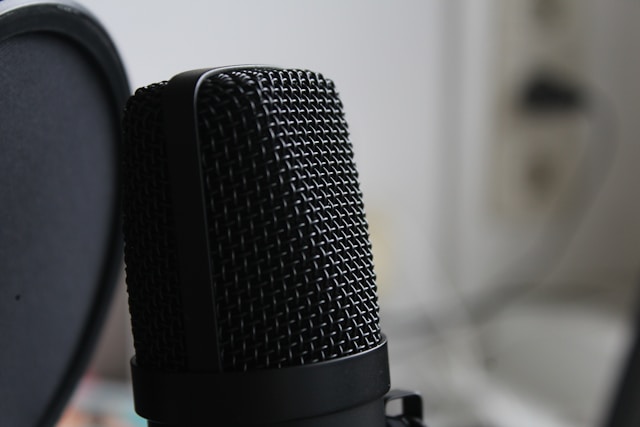When professional wrestlers hang up their boots, the traditional path used to be clear: become a trainer, open a wrestling school, or fade into convention appearances. Today, there’s a new championship belt everyone’s chasing—and it’s behind a microphone. Former wrestling stars have discovered that podcasting offers something the ring never could: creative control, direct fan connection, and a platform that doesn’t require taking bumps at 50 years old.
In simple terms: the podcast booth has become wrestling’s most lucrative second act, and it’s changing how we consume wrestling content forever.
From the ring to the recording studio: wrestling’s media evolution
The shift didn’t happen overnight. Stone Cold Steve Austin pioneered this path with The Steve Austin Show in 2013, proving that wrestling fans craved long-form conversations with their heroes. What started as a retirement hobby quickly became a full-fledged media business, opening the floodgates for dozens of former performers.
Today, podcasting has become the default second career for retired wrestlers. Chris Jericho’s Talk Is Jericho, Booker T’s Hall of Fame podcast, and countless others have proven there’s massive audience appetite for behind-the-scenes stories, industry analysis, and the unfiltered personalities that TV scripts never quite captured. Live audio wrestling has evolved from a niche interest into a full-blown industry segment.
The podcast ecosystem: building media empires from wrestling fame
What separates successful wrestling podcasters from hobbyists is how they’ve built complete media businesses around their shows. For these former performers, podcasting is often the foundation of a broader content empire.
- Multiple revenue streams: Patreon subscriptions, live show tours, merchandise, and sponsorships create diversified income that often exceeds their in-ring earnings. Canadian wrestling podcasters have secured partnerships with brands ranging from supplement companies to best real money casinos in Canada, tapping into their audience’s entertainment interests beyond wrestling.
- YouTube integration: Video versions of podcasts reach millions, with some channels surpassing major wrestling news outlets in subscriber counts.
- Social media amplification: Clips go viral on Twitter and Instagram, driving discoverability and building audiences beyond traditional wrestling fans.
- Convention appearances: Podcast popularity drives booking fees up, as promoters know these personalities can draw crowds and sell autographs.
- Merchandise lines: Catchphrases from podcasts become T-shirt designs, creating passive income long after episodes air.
Instead of relying on a single podcast, savvy ex-wrestlers have built interconnected content ecosystems where each element reinforces the others.
Why authenticity is wrestling podcasts’ secret weapon
The corporate wrestling world is heavily scripted, with every promo and interview carefully managed. Podcasts offer the opposite: unfiltered, authentic conversations that fans rarely heard during performers’ active careers. This raw honesty creates parasocial connections stronger than any storyline.
Former wrestlers can finally speak candidly about backstage politics, reveal stories that would’ve gotten them fired, and show personality layers that five-minute TV segments never allowed. When Mark Henry discusses his career on Busted Open Radio or when Renee Paquette delivers unfiltered commentary, fans get the real person, not the character—and that authenticity is irreplaceable. These shows have become essential listening, joining the ranks of the best wrestling podcasts people should know about for their raw honesty and insider perspectives.
Some podcasters have even discovered second careers as legitimate journalists and interviewers, skills they developed accidentally while simply talking about wrestling.
The technology making wrestling podcasts accessible to everyone
Unlike wrestling itself—which requires rings, venues, insurance, and physical capability—podcasting’s barrier to entry is remarkably low. This democratization has allowed wrestlers at every level to build audiences.
- Affordable equipment: Quality microphones and recording software cost less than a month of gym membership.
- Distribution platforms: Spotify, Apple Podcasts, and YouTube handle hosting and discovery for free.
- Remote recording: Services like Riverside and SquadCast enable interviews with guests anywhere in the world.
- AI editing tools: What once required audio engineering skills can now be automated, reducing production time dramatically.
- Mobile accessibility: Fans consume episodes during commutes, workouts, or while multitasking with other entertainment, making wrestling podcasts the perfect companion content for any activity.
This technological accessibility means even wrestlers who never reached main-event status can build sustainable podcast careers, something impossible in traditional media.
Why ex-wrestlers avoid traditional media careers
Broadcasting jobs with WWE, AEW, or traditional sports networks remain options, but many wrestlers deliberately choose podcasting instead. Why turn down corporate positions for independent content creation?
Control is the answer. Traditional broadcasting means bosses, scripts, and corporate approval for every opinion. Major wrestling coverage outlets, by contrast, offer complete editorial freedom. Hosts choose topics, guests, and angles without network interference.
Additionally, traditional media jobs often require relocating to specific cities and maintaining rigid schedules. Podcasting offers location independence and flexible recording times—crucial for performers who spent decades living out of suitcases and want stability for their families.
The future: a wrestling media landscape shaped by former performers
The irony is that ex-wrestlers may end up controlling wrestling media precisely because they bypassed traditional gatekeepers. While wrestling companies invest millions in production studios, independent podcasters build loyal audiences one episode at a time, often rivaling official programming in engagement and influence.
For now, the biggest wrestling podcasts are run by established legends, but the real opportunity lies with the hundreds of mid-card performers who never got their moment in the spotlight but have compelling stories and dedicated fanbases. Many are discovering that starting a wrestling podcast is more accessible than ever, allowing them to build audiences and income streams that eluded them during their in-ring careers.
Call it retirement, reinvention, or simply the evolution of wrestling media—but the pattern is undeniable. And like the best wrestling angles, this story is just getting started.
One podcast episode at a time.
